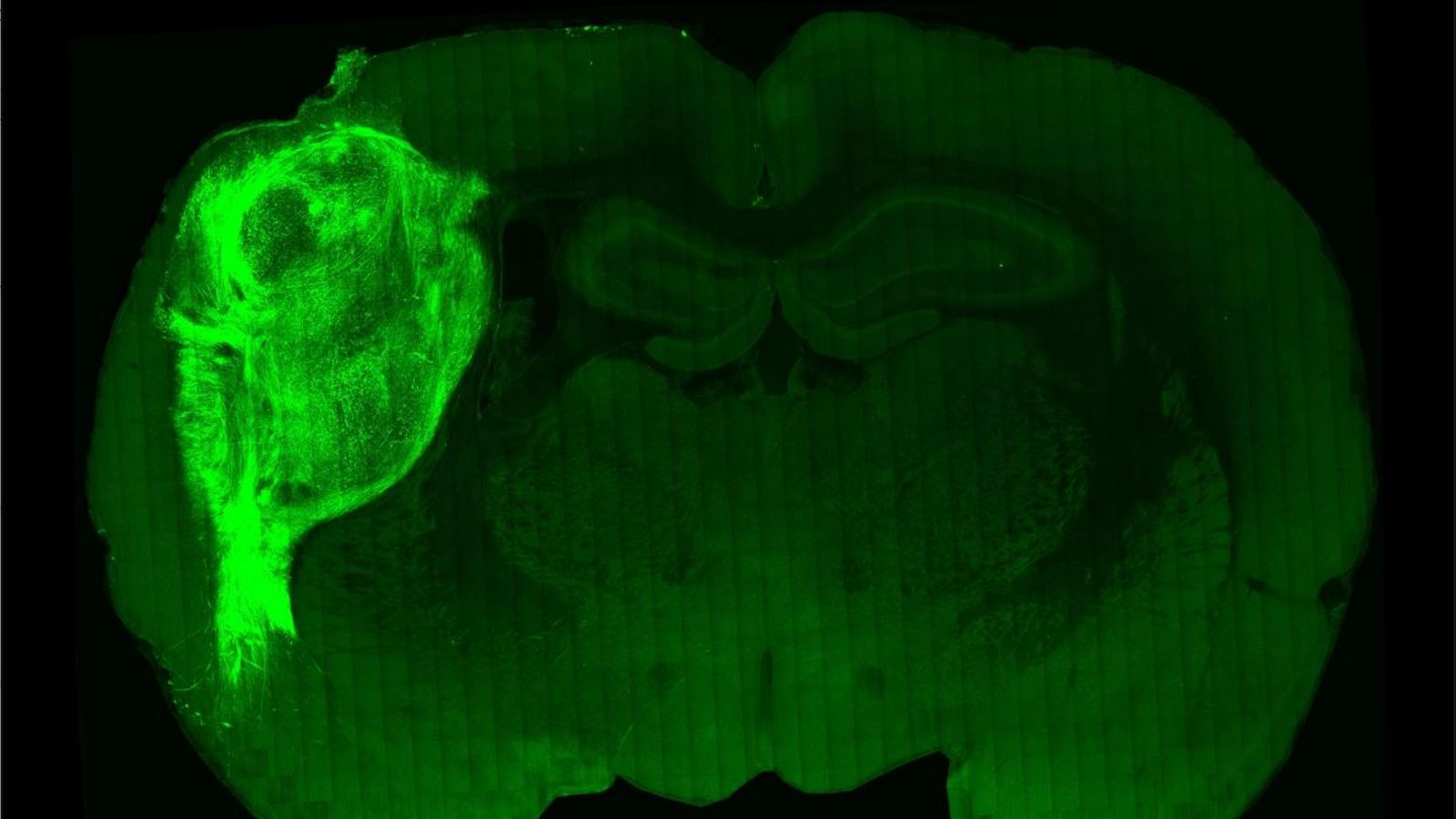A research team in the US has shown that human brain tissue implanted into rats can integrate into its host’s brain, promising to give scientists an entirely new way to study brain disorders – but raising ethical questions too.
Professor Sergiu Pasca and colleagues at Stanford University in California took sesame seed-sized clumps of human brain cells called “organoids” grown in a test tube and implanted them into the brains of baby rats.
In the research, published in the journal Nature, they report that not only does the human brain tissue survive, but it incorporates itself into the rat brain, making connections with rat brain cells and being served by the rat’s blood supply.
The organoids also grew in the rat brain, to about the size of a pea.
The human nerve cells grow about six times larger in the rat than they do in the test tube.
The team then conducted a series of experiments that showed the human brain cells could receive sensory signals from the rat’s whiskers, but could also send instructions to other parts of the rat brain when trained to do so.
“They can receive sensory input but they also participate in some of the neural circuitry of the rat,” says Professor Pasca.
Lucy Letby trial day three: Nurse ‘killed two out of three triplets’ – and ‘smiled after killing another premature baby girl at fourth attempt’
Leah Croucher: Human remains found in Milton Keynes in search for teenager missing since 2019
Government borrowing costs hit 20-year high after Bank of England confirms bond-buying will end on Friday
The research team’s aim is to develop “in vivo” models for studying the human brain and its diseases.
‘Step closer to seeing inside human mind’
The complex cellular or chemical underpinnings of brain disorders like autism and schizophrenia are very hard to study in human subjects. Mice and rats are poor surrogates for the human brain and research using primates is ethically dubious.
And while organoids in test tubes have led to a new understanding of how nerves work at a cellular level, they never grow as large or complex as healthy human brain tissue.
But growing human brain organoids in another species is a step closer to seeing inside the human mind, the researchers hope. Particularly when it comes to testing new drugs for brain disease.
“Just imagine with this model, you have a non-invasive way of testing the drug on human cells “in vivo”, says Professor Pasca.
But, if the research went beyond that, putting human brain cells into animals would raise profound ethical questions. The research team say they observed no behavioural differences between the rats with human brain grafts and those without.
And given the limited life span of rats, human brain tissue, which takes years to reach maturity, can only develop so much.
Read more:
UK at risk of ‘brain drain’ as scientists leave Britain
Gaming can kill children with undiagnosed heart issues
Most experts seem to think given the small size of a rat brain and the even smaller size of the transplanted human tissue, the rats will not become even partially human – and the amount of human brain circuitry is too small to have its own consciousness.
But as the field advances, scientists will need oversight, experts say.
“Crucial questions surround whether an organoid can have consciousness and moral status,” write human organoid researchers J Gray Camp and Barbara Treutline in an article accompanying the publication.
“Active discourse is needed,” they write, “to develop frameworks and boundaries for research that uses organoids to model the circuitry of the human brain”.
Human brain organoids into primates?
One obvious next step could be to put human brain organoids into primates.
Their brains are large enough to accommodate far more human brain tissue, and live for much longer than rats allowing the brain cells to mature.
But this, according to Professor Pasca, is currently a red line: “Transplantation into primates is not something we would do, or encourage doing.”





